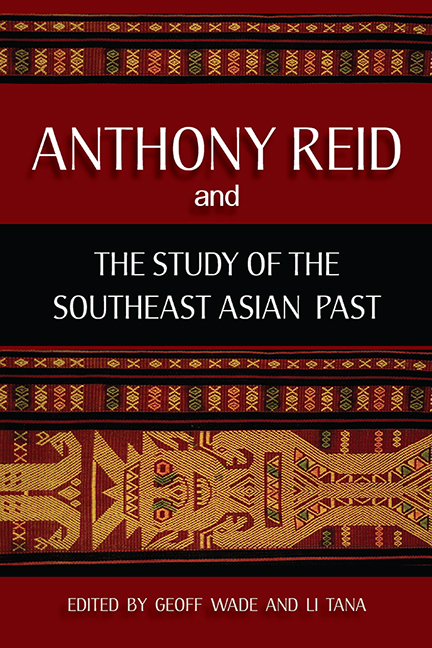Book contents
- Frontmatter
- Contents
- Acknowledgements
- The Contributors
- PART I Introduction
- PART II The Scholarship of Anthony Reid
- PART III Southeast Asia in the World
- PART IV Early Modern Southeast Asia
- 7 Southeast Asian Islam and Southern China in the Fourteenth Century
- 8 Lancaran, Ghurab and Ghali: Mediterranean Impact on War Vessels in Early Modern Southeast Asia
- 9 Weather, History and Empire: The Typhoon Factor and the Manila Galleon Trade, 1565–1815
- 10 Interracial Marriages and the Overseas Family: The Case of the Portuguese Topasses in Timor
- 11 A Note on the Čhām Diaspora in the Ayutthayan Kingdom
- 12 Tongking in the Age of Commerce
- PART V Modern Southeast Asia
- Appendix
- Index
- Plate section
8 - Lancaran, Ghurab and Ghali: Mediterranean Impact on War Vessels in Early Modern Southeast Asia
from PART IV - Early Modern Southeast Asia
Published online by Cambridge University Press: 21 October 2015
- Frontmatter
- Contents
- Acknowledgements
- The Contributors
- PART I Introduction
- PART II The Scholarship of Anthony Reid
- PART III Southeast Asia in the World
- PART IV Early Modern Southeast Asia
- 7 Southeast Asian Islam and Southern China in the Fourteenth Century
- 8 Lancaran, Ghurab and Ghali: Mediterranean Impact on War Vessels in Early Modern Southeast Asia
- 9 Weather, History and Empire: The Typhoon Factor and the Manila Galleon Trade, 1565–1815
- 10 Interracial Marriages and the Overseas Family: The Case of the Portuguese Topasses in Timor
- 11 A Note on the Čhām Diaspora in the Ayutthayan Kingdom
- 12 Tongking in the Age of Commerce
- PART V Modern Southeast Asia
- Appendix
- Index
- Plate section
Summary
Until the end of the seventeenth century, galleys remained the backbone of the Mediterranean war fleets. Maritime powers such as Venice, Genoa, the Holy Order of Malta and the Ottoman empire, not to speak of lesser actors in the Middle Sea such as Spain or Portugal, all maintained large fleets of such oared sailing vessels. This tradition went back to Antiquity, and reached its high point at the critical 1571 battle of Lepanto, in which large Ottoman and united European fleets opposed each other, and the Muslim forces were defeated, but far from eliminated.
It has long been known that the conflict between European and Ottoman forces spilled over into the largely Muslim Indian Ocean as the Portuguese entered it. At its eastern borders, the burgeoning Malay world sultanates, after the fall of their major stronghold at Melaka to the hands of the Portuguese, became de facto actors of this generalized conflict; by the second half of the sixteenth century, Aceh and some of its allies had secured some help from the Ottomans and from their Indian Ocean allies against European competitors. In the straits area of Southeast Asia, however, the dividing line between the Muslim and Christian camps was far from clear-cut, as local economic and political rivalries often took precedence over the religious divide; the Portuguese found themselves more than once siding with Johor against Aceh, and the final capture of Portuguese Melaka by the Dutch was achieved with Acehnese help.
When the Portuguese arrived in Southeast Asian waters in 1509, they soon had to deal with local war fleets, whether to fight against them, or to side with them. In fact, as they had already been doing along the Western coast of India and in the Arabian Sea and the Persian Gulf, they would themselves adapt their war tactics at sea to the specific environment of Melaka and neighbouring Muslim polities. One year after taking over the Malay city-state, they engaged in a programme of building their own galleys for local usage, and they appear to have been keen on using Javanese craftsmanship and manpower to build them, and then to man them. All through the sixteenth century, the fleets for the defence of Melaka were constructed locally or in India.
- Type
- Chapter
- Information
- Anthony Reid and the Study of the Southeast Asian Past , pp. 146 - 182Publisher: ISEAS–Yusof Ishak InstitutePrint publication year: 2012

